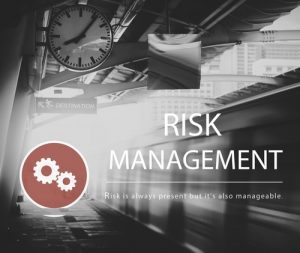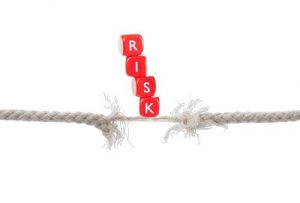The Greatest Challenge for Managers

It is not possible to eliminate risk in business decisions. Our challenge is to identify the right risk to take and then to minimise and manage that risk.
The course entitled “Risk Management, Control and Compliance” is held several times each year in our major international training centres, where experienced managers from a wide range of business sectors meet and interact with each other and with the highly experienced GLOMACS course leader in learning about state-of-the-art tools and techniques of risk analysis and risk management and considering how to apply them in a real-life situation.
What is Strategic Risk?
Strategic risk is any event that can prevent an organisation or team from achieving its objectives and goals. Strategic risks are those that arise from the fundamental decisions that managers take concerning an organisation’s direction and objectives. Essentially, strategic risk management are about assessing the consequences of failing to achieve direction and business objectives. The basic principles of risk management start with the creation and implementation of a robust business strategy.
A useful subdivision of strategic risks can be made as follows.

Non-business risks – risks that do not derive from the products or services supplied. For example, risks associated with the long-term sources of finance used. Strategic risk levels link in with how the whole organisation is positioned in relation to its environment and are not affected solely by internal management decisions. Competitor actions will affect risk levels in product markets, and technological developments often mean that production processes or approaches quickly become out-of-date.
 Risk Management is more than Insurance
Risk Management is more than Insurance
Risk analysis and risk management cover much more than insurance. In fact, it could be stated that insurance starts to function when true risk management fails.
We first consider how to build risk analysis into business development decisions. Starting with an understanding of our “risk appetite” – the extent to which we can tolerate risk given our resources and business prospects – we study the analytical tools and management techniques that enable us to carry out a critical evaluation of risk in every proposed decision.
Insurance remains a significant mechanism for coping with risk, and the insurance business has been innovative in its approach to offering cost-effective products that combine multiple mechanisms such as deductibles, retentions and captives to achieve the most cost-effective mix and balance of approaches.
To achieve our main objective of enabling delegates to (a) contribute to decisions on managing risk and (b) introduce a risk management culture in their teams we focus on the following critical issues.
- Learning about processes guidelines and standards in risk analysis and assessment
- Understanding the relevance of ISO and achieving accreditation
- Applying best practice in managing risk and uncertainty
- Optimising a risk management system for your organisation
Contemporary Best Practice in Risk Management

One of the most exciting developments in risk management is the emerging concept of “risk engineering”. This was developed in the United States of America for major high-risk projects in construction and hazardous operations such as oil, gas and petrochemicals. It is based on the incorporation of engineering principles into the design and management of complex systems. In this way it is possible to build risk reduction into decisions at the earliest stages of a programme or project rather than to have to react to a problematic risk event after it has occurred.
Another significant development is the modification of contemporary financial analysis to include the concept of the “risk adjusted DCF/NPV calculation”. In this we use the very powerful standard technique of discounted cash flow and net present value but introduce a modifying factor to adjust the final figure to consider the risk associated with strategic choice between projects and in setting priorities in project sequencing.
Control and Compliance
Procedures and standards are converging internationally due in great part to the influence of ISO (International Association for Standardisation). ISO certification is a very effective way of demonstrating internally and externally that your organisation is well controlled and operating in conformity with the rising standards that are explicit in detailed legal and best practice requirements now being introduced into corporate governance systems.
To cope with the challenge of creating consistent and workable processes for managing business risks, organisations need to introduce a “risk management culture” that emphasises at all levels the importance of managing risk as part of each person’s specialist activities. The purpose of a risk management culture is to create a situation where staff and managers instinctively look to identify risks and minimise any possible negative impact when making decisions.
Summary
The final objective of this course is to enable participants to contribute to creating an effective risk management system that applies best practice to the specific characteristics and needs of the organisation. It will form the basis of a company-wide risk management process that will enable you to introduce a risk management culture in your teams. This will have a direct and substantial impact on your organisation’s business performance and development prospects.
All the above issues (and more) are addressed in depth in the presentations and discussions that make up this fast-paced and engaging course. You are invited to enrol and participate in “Risk Management, Control and Compliance” at one of our international training centres.
You can register online right now or request a paper registration form from us or just by calling us at +9714 4250700
For more information click here. Bookings are essential as places are limited. To reserve your place, contact [email protected] or call +971558601246. If you were on the waiting list from last session, we have your details and you will be contacted shortly.


